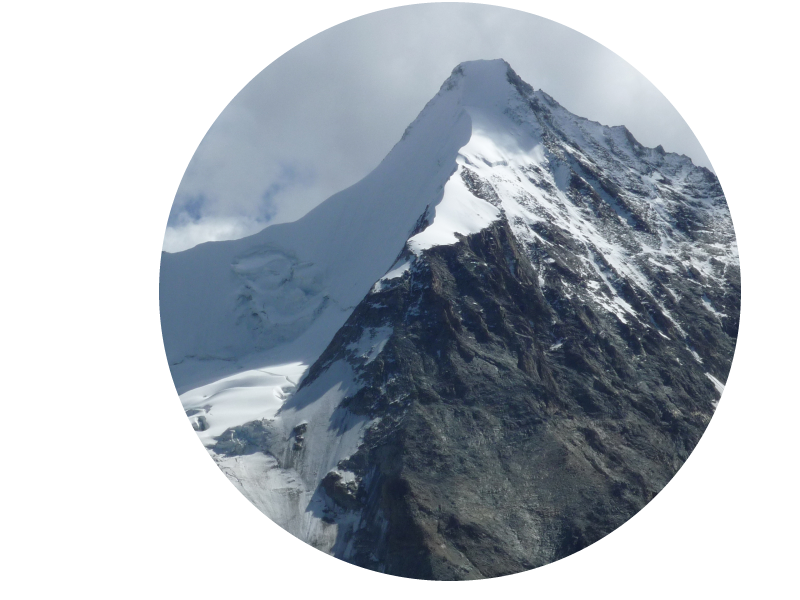Progression sur terrains peu difficiles à assez difficiles
Comme dans le cas de la progression en terrain facile, la progression en terrain peu ou assez difficile s’apparente beaucoup à la simple marche (intervention limitée des bras; principaux efforts fournis par les jambes et les pieds).
Cependant, même si les difficultés sont peu spectaculaires, les fautes peuvent entraîner des accidents graves.
Il n’est pas toujours facile de classer le terrain selon des catégories de difficulté. Il y a tous les cas limites.
Pour certain, un type de terrain particulier sera considéré comme facile alors que pour d’autres il pourra apparaître comme étant peu difficile, voir assez difficile.
Le terrain lui-même, de par sa nature, ne se prête pas toujours bien à la cotation. Si les cotations rocheuses sont généralement assez précises, celles qui concernent la neige ou la glace le sont beaucoup moins car elles dépendent non seulement de l’inclinaison de la pente mais aussi, et dans une plus grande mesure encore, de la qualité du manteau blanc qui la recouvre. Il en va de même pour les terrains recouverts de blocs, d’éboulis ou d’herbe.
Pendant la progression elle-même, surtout lorsque celle-ci est monotone comme c’est souvent le cas lors d’une montée sur la neige, il arrive parfois que l’on passe sans s’en rendre compte – et donc sans avoir pris les mesures de sécurité adéquates – d’un terrain facile à un terrain assez difficile.
C’est le cas typique d’un névé qui se redresse progressivement sans changement dans la nature et la qualité de la neige.
Attention à l’inertie qui entraîne un retard dangereux dans le jugement !
Dans le cas envisagé ici, celui de la progression en terrain peu à assez difficile, nous n’indiquerons que les techniques de bases permettant de faire des courses faciles en toute sécurité.
Mais comme il n’est pas toujours possible de faire, au niveau des principes généraux,
une distinction nette entre terrain peu difficile et terrain assez difficile,
il reste évident que le montagnard, même débutant, se doit de connaître
les principes de base de l’alpinisme de difficulté plus élevée.
Progress on slightly difficult to fairly difficult terrain
As in the case of progress over easy terrain, progress over slightly or fairly difficult terrain is very similar to simple walking (limited use of the arms; main efforts made by the legs and feet).
However, even if the difficulties are not spectacular, mistakes can lead to serious accidents.
It’s not always easy to classify terrain according to difficulty. There are all sorts of borderline cases.
For some, a particular type of terrain will be considered easy, while for others it may appear to be not very difficult, or even quite difficult.
The terrain itself, by its very nature, does not always lend itself well to grading. While rock ratings are generally fairly accurate, those for snow and ice are much less so, since they depend not only on the inclination of the slope but also, and to an even greater extent, on the quality of the white mantle covering it. The same applies to ground covered with boulders, scree or grass.
During the ascent itself, especially when it is monotonous as is often the case when climbing on snow, you can sometimes move from easy to fairly difficult terrain without realising it – and therefore without having taken the appropriate safety measures.
This is a typical case of a snowfield that gradually recovers without any change in the nature or quality of the snow.
Beware of inertia, which leads to a dangerous delay in judgement !
In the case we are considering here, that of progressing in terrain that is not very difficult to fairly difficult, we will only describe the basic techniques that will enable you to make easy runs in complete safety.
However, as it is not always possible to make a clear distinction, in terms of general principles,
between terrain that is not very difficult and terrain that is quite difficult,
it is clear that mountaineers, even beginners, need to know
the basic principles of mountaineering of a higher level of difficulty.



Can I just say what a comfort to discover somebody
that truly knows what they’re discussing on the web. You actually understand how to bring an issue to light and make it important.
More and more people ought to read this and understand this side
of the story. I can’t believe you aren’t more popular since you
definitely possess the gift.
My partner and I absolutely love your blog and find nearly all of your post’s to be just what
I’m looking for. can you offer guest writers
to write content in your case? I wouldn’t mind producing a post or elaborating on many of the
subjects you write concerning here. Again, awesome weblog!
This is my first time pay a visit at here and i am in fact impressed to read all at alone place.
Hello i am kavin, its my first occasion to commenting anyplace,
when i read this post i thought i could also make comment due to this brilliant
article.
Hello to every body, it’s my first pay a quick visit of this
web site; this blog contains amazing and actually excellent material in support of readers.
When someone writes an piece of writing he/she keeps the image of a user in his/her brain that how a user can be aware of
it. So that’s why this piece of writing is perfect.
Thanks!
Definitely believe that which you stated. Your favorite reason appeared to be on the web the easiest thing to be aware of.
I say to you, I certainly get annoyed while people consider worries that they
plainly do not know about. You managed to hit the nail upon the
top and defined out the whole thing without having side-effects ,
people could take a signal. Will likely be back to get more.
Thanks